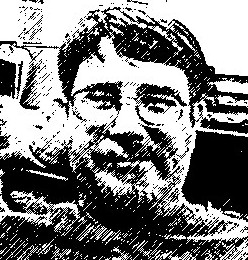Yesterday we had another T-TRAK get-together of the model railroad club. The narrow gauge modules didn't go to this one since I haven't corrected all of the issues I had with them, but I did get some scenery done on the end cap.
Let me digress.
I built an end cap to use when running my narrow gauge modules to complete the standard gauge loop. At the time that I built it I had no intention of ever using it for anything other than completing that loop for home use while testing the narrow gauge line. However, we have a show coming up in October at the Selma NC train station, and we were short a loop. The club asked me if they could use my end cap, and I committed to completing some scenery on it so that it could be used for that purpose.
In other news, my grand-daughter in Wyoming has gotten into horses and rodeo riding, and it just so happened that I have in my collection of figures a horse that looked amazingly similar to hers. A little paint and it is a match. Additionally, I have a structure of a horse barn that I built long ago for my 4x8 layout that was going to waste. And so, I reasoned, what better than a horse pasture for the end cap.
The first thing I did was lay out all of the components. Well, actually, the first thing I did was build the windmill that you see, and then I laid out all of the components. Horses, of course, and the horse barn, but also some large sunflowers that I had bought because my wife likes sunflowers and never found a place for.
I rearranged the pieces until I had a rough idea of where I wanted everything to go, and then started gluing everything in place.
The final arrangement moved around quite a bit, but eventually I had everything where it needed to be. The rocks were better on the outside edge, a water tank to go with the windmill, a tree for shade and of course the shelter.
The rancher and his helper checks fences. Yes, the fence is a bit big, about 10 scale feet in fact, which is bigger than I wanted it to be but that was a detail I didn't really notice until the figures were glued in place. That's what I get for not checking the measurements.
The sunflowers are 12-14 feet in height because they are HO scale, but there are sunflowers that are that big so it's not a huge stretch. I was careful to plant them all looking the same way and the wife loves the way they came out.
The white horse is the grand-daughters. I got a real good view of the grass in front of it, but not so much of the horse itself. A shame really, but at least you can see what it is.
A few more horses stand around the shelter observing the rancher from afar.
And the overall birds-eye view.
Yesterday it went to the show (but was not included in the layout) to be inspected and certified as ready for use. After the show I took it home, added some track feeders and painted the edges in the appropriate club color of brown. Next is to build a shipping container of some sort to protect it as it makes its way to the show in Selma.
And in other news, J class 611 has arrived and has been programmed. I also put decoders in my 4-8-2 light mountain locomotive and I plan on making a K2a out of it, just one of many projects. My two Consolidations also got decoders but one of them has a hitch in its giddyup so it will need some additional work on the driveline.
I also have decoders for a couple of diesels, but I need a few more for some Life Like GP20's in N&W livery. These are some wonderful locomotives, I got a couple of them in garish MicroTrains Christmas paint and was pleasantly surprised at how well they ran. I have since acquired three black ones in N&W paint and one in the CB&Q Redbird scheme. I don't think they made a black CB&Q loco, but if they did I would certainly retire the SD7 and SD9 because their wheelbases are a bit long for some of my current corners.
The CB&Q GP20 ran on the club layout yesterday, turning in a flawless performance where the GP9 bounced over a piece of expansion track (later on I found one wheelset on the narrow side) and both it and the Consolidation picked points on one turnout in particular. Like I said, they run surprisingly well for being inexpensive locomotives, a little bit on the noisy side but that's something I can live with.
And that's the state of things here. I hope you all are getting some train time in.





















































